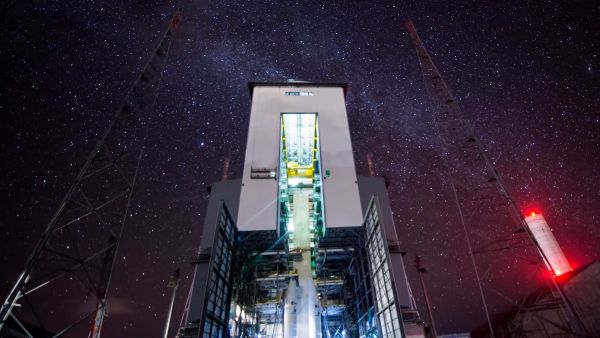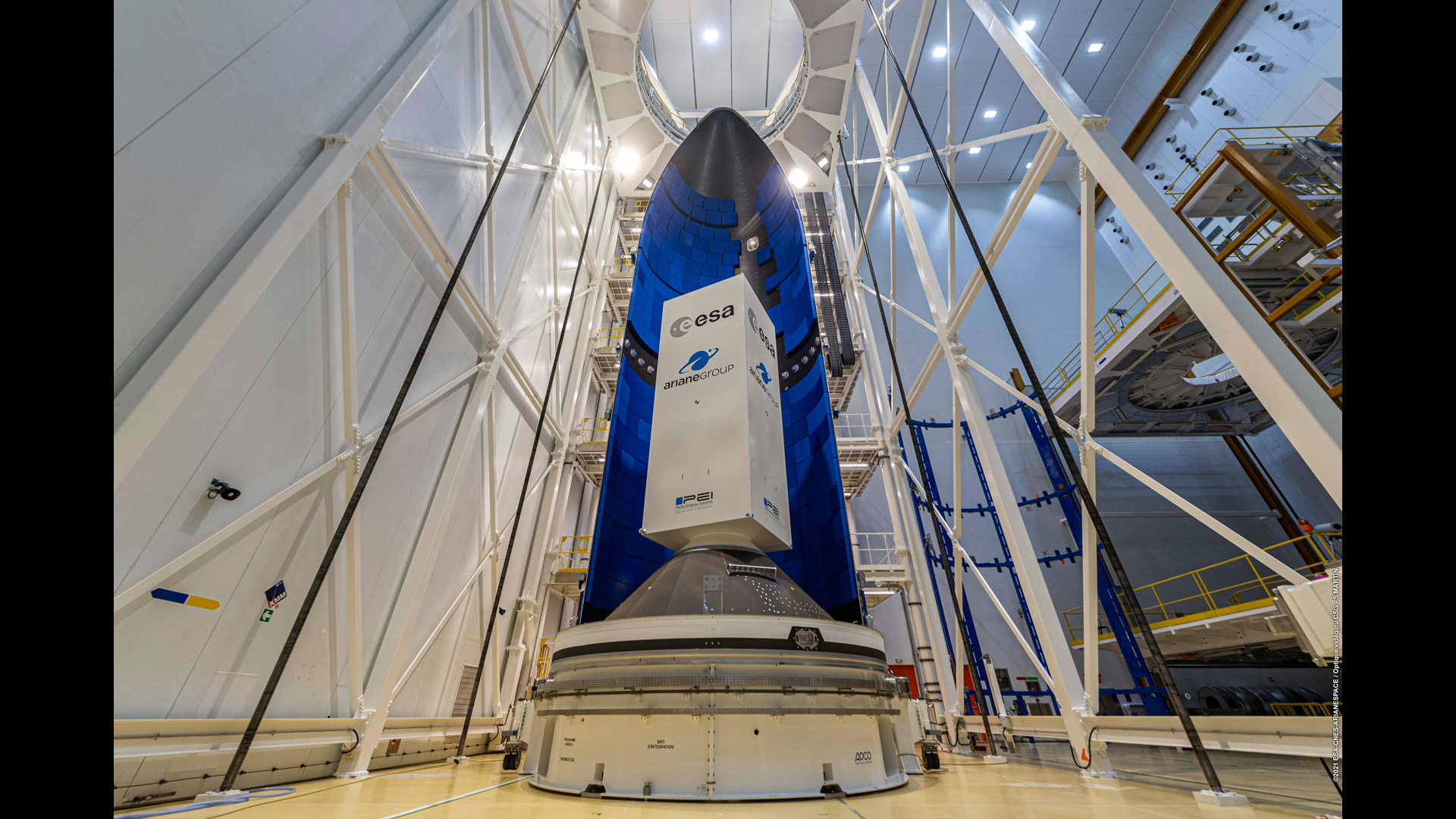Milky Way lights up Guiana spaceport in stunning time-lapse video
Magnificent starry sky awaits Europe's new Ariane 6 rocket in French Guiana.

The European Space Agency (ESA) recently released a time-lapse video capturing the pristine night sky above Europe's spaceport in Kourou, French Guiana, where preparations are underway for the arrival and integration of Europe's latest launcher, Ariane 6.
The first component of the rocket has already arrived at the Guiana Space Center: the payload fairing, a 18-foot-wide (5.4 meters), 66-foot-tall (20 m) nose cone that protects the payload during a launch. Engineers at the center are currently working to integrate the fairing with a mockup payload and ready it for a series of tests, according to an ESA statement.
However, most of the components of the rocket, which is scheduled for its debut flight in April 2022, have yet to undergo major tests in Europe.
On Tuesday (May 11) the manufacturer of Ariane 6, ArianeGroup (the parent company of Arianespace), announced that it had concluded testing of the central power unit of the rocket's upper stage at its facilities in Vernon, France. The completion of the Auxiliary Power Unit's (APU) qualification campaign paves the way for the first hot-fire test of the completed upper stage, which is currently being prepared at the facilities of the German Aerospace Centre (DLR) in Lampoldshausen.
The APU is one of the key components behind the Vinci reignitable engine that powers the upper stage. The power unit pressurizes the fuel tanks, which contain liquid hydrogen and liquid oxygen fuel, before each reignition in orbit. It can also provide additional thrust when needed and will be used to safely deorbit the upper stage after it delivers its cargo to space.
The reignitable Vinci engine will enable Ariane 6 to dispense batches of small satellites into various orbits, a key capability designed to cater to the needs of the growing small satellite and satellite megaconstellation market.

Related: Meet Ariane 6 and Vega C: Europe's new 'rideshare' rockets (videos)
Sign up for the Live Science daily newsletter now
Get the world’s most fascinating discoveries delivered straight to your inbox.
"This propulsion system is a key factor in enhancing the versatility of Ariane 6, notably for launching constellations," André-Hubert Roussel, CEO of ArianeGroup, said in a statement. "We took the decision of introducing this innovation during development, and the success of the qualification tests is a reward for the technological boldness shown by our Ottobrunn and Vernon teams who were able to invent and develop a multi-function instrument which makes a significant contribution to the competitiveness of Ariane 6."
ArianeGroup, a joint venture between the European aerospace giant Airbus and French launcher manufacturer Safran, will produce Ariane 6 in two versions.
The lighter Ariane 62, with two strap-on boosters, will be able to lift about 9,920 lbs. (4,500 kilograms) into the geostationary orbit — an orbit at the altitude of 22,000 miles where satellites appear suspended above a certain spot on Earth — and up to 23,000 lbs. (10,300 kg) into low Earth orbit, the first 100-620 miles (160-1,000 km) of space.
The four-booster Ariane 64 will be able to lift 25,000 lbs. (11 500 kg) into geostationary orbit and 45,000 lbs. (20,600 kg) into low Earth orbit. For comparison, SpaceX's Falcon Heavy rocket can loft up to 140,700 lbs. (63,820 kg) to low Earth orbit.
Ariane 6 was originally expected to perform its maiden flight in late 2020.
Follow Tereza Pultarova on Twitter @TerezaPultarova. Follow us on Twitter @Spacedotcom and on Facebook.











